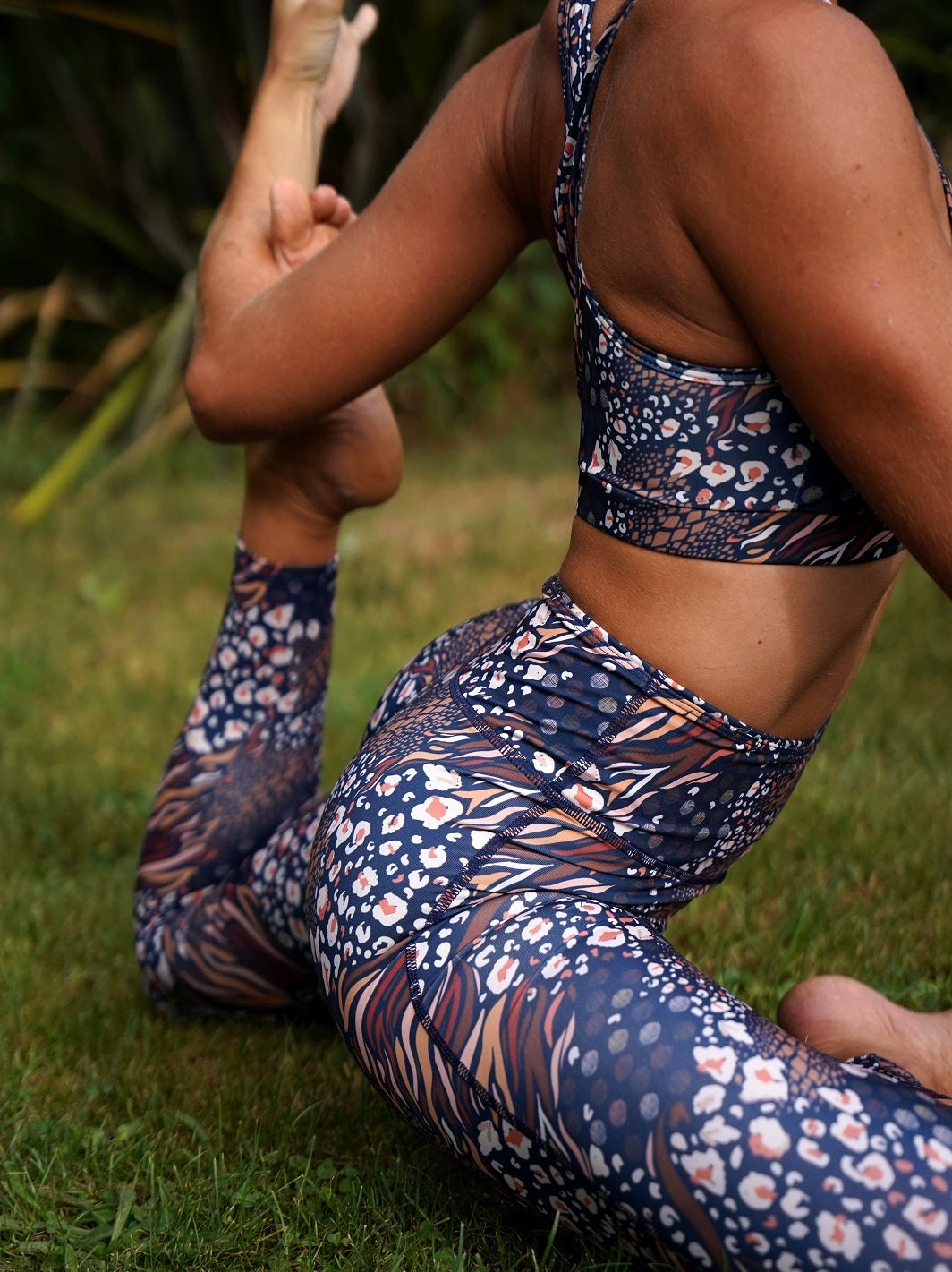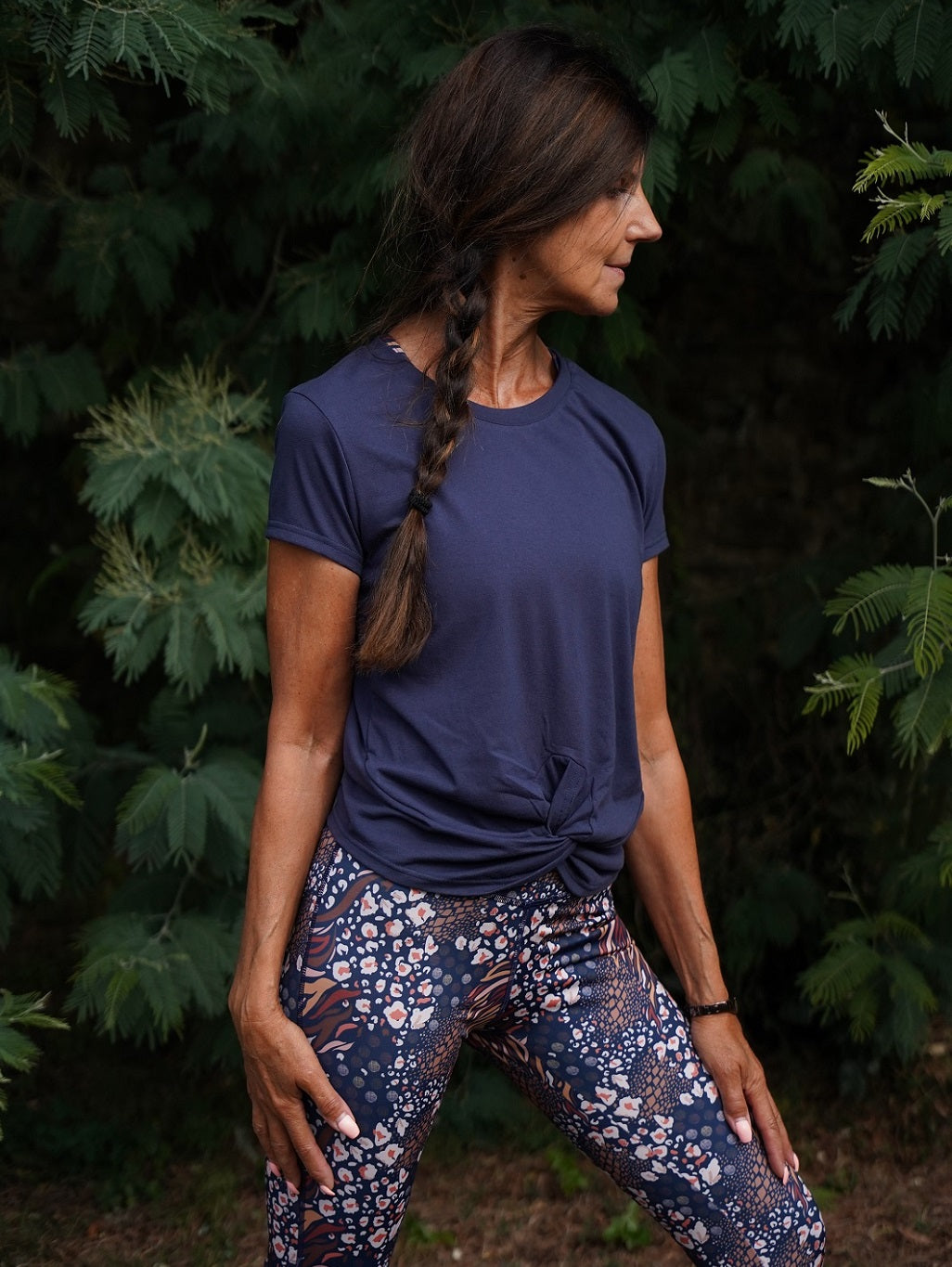If you are interested in the subject, it is most likely:
- that the mode of operation of (hyper) fast fashion revolts you
- that climate change worries you and that you sincerely want to make an effort
- that you have decided to gradually change the way you buy to escape the consumer society
In either case (and who knows maybe all three), it deserves congratulations!
Well done 🎉🎉🎉
So, how can we stop being fooled by the greenwashing subterfuges of certain brands?
How can you ensure that a garment is indeed made in an ethical and eco-responsible way?
This is what we are going to explore in this post by giving you concrete tools to become pros!

1. Perfection does not exist
To avoid disappointment, know that no brand is perfect and never will be…
The simple act of producing clothing has an impact on the environment.
For a zero carbon footprint, prefer to wear the clothes you already have, or second hand!
If you need something new, beautiful brands like Géopélie are working hard to shake things up and are committed to different fashion.
Each brand places the cursor where it makes sense for them.
Some favor local manufacturing, others more virtuous materials, still others do both (us for example 😉).
Please note that the simple mention “made in France” or “made in Europe” does not make a garment eco-responsible, as transport by plane from China, for example, has less impact than the production of the textile materials used.

2. Definition of an ethical and eco-responsible brand
An ethical and eco-responsible brand is proud to be so, it is part of its DNA.
There is therefore no reason to hide or omit information.
If you can't find the information you're looking for, there's something fishy going on.
Do you still want to have an answer? Contact customer service, who should not bat an eyelid at the sight of slightly disturbing questions.
No response from customer service?
Run away !
To summarize, an ethical and eco-responsible brand tries by all means to produce as locally as possible, using textile fibers with as little impact on the environment as possible, all this while avoiding sales, excessive advertising and rotating collections galore since she simply cannot afford it financially.
And in case it wasn't clear, she communicates transparently!
To discover our eco-design approach, consult our infographic if you are in a hurry or read our complete article on our commitments if you have more time!

3. Toolbox: become Sherlock Holmes
To know if a brand is indeed ethical and eco-responsible, there is no secret!
You have to do a little inspection work, which is essential to find all the information.
Put on your monocle, let's go!
Look in particular:
- The composition of the fabric (ideally recycled or certified natural or artificial materials)
- The place of manufacture (ideally in Europe, or better yet in France)
- The number of collections per year (4 grand max)
- Does the brand offer pre-ordering?
- Is there a sale page or an outlet?
- Are you bombarded with ads or rather pursued by cookies after leaving the website?
If you cannot find the information you are looking for, refer to point 2.

4. The materials used
The choice of textile fiber plays a fundamental role since it represents 63% of the total carbon footprint of the garment. Knitting/weaving, finishing/dyeing and making only account for 30%, and packaging and logistics for 7%!
Source: ADEME beautiful footprint study
As a reminder, cotton, unless it is organic, consumes a lot of water.
Synthetic fibers like polyester and nylon are petroleum derivatives.
Artificial fibers like viscose are extremely polluting.
Therefore favor:
- Recycled fibers (fruit of fraying textile waste) or upcycled (end of rolls of fabric) for a very low environmental impact (that's what we do 😉)
- Natural fibers that are low in pollution or consume little water such as linen, hemp, wool
- Organic cotton compared to traditional cotton, provided that it is GOTS labeled (be aware that there is more organic cotton sold on the market than is produced, find the mistake 🤪)
- ECOVERO certified viscose compared to standard viscose
To absolutely avoid: non-recycled polyester!
Ethical and eco-responsible brands often take a global vision and think about the smallest details: packaging, labels, stationery are eco-responsible too!
At Géopélie, we only use recycled materials, for clothing and packaging, yeahhh 💪!

5. Place of manufacture
Due to labor laws and minimum wages in force, the place of manufacture gives us a good indication of the conditions in which the clothes are made.
Knowing the place of manufacturing allows you to know if a brand is ethical (and not eco-responsible).
Countries like Portugal, France, Italy and Spain are subject to European labor law which guarantees respect for workers.
Conversely, Bangladesh, India, China, Cambodia, Vietnam and Turkey are far from European standards, as evidenced by the collapse of the Rana Plazza on April 24, 2013, which housed clothing workshops for brands like Mango. , Benetton, … having caused more than a thousand deaths and injuries.
At Géopélie, we have chosen made in France 🇫🇷 and we explain to you here why.

6. Labels
Labels are a plus!
But be aware that not all brands necessarily have the means to afford them.
If you find clothing made locally (see point 5) in an eco-responsible material (see point 4), that's already great!
Here are some labels to know and understand:
- Oeko-tex Standard 100 : guarantees that the garment does not contain any chemicals harmful to health, but nothing else
- GOTS : for Global Organic Textile Standard which guarantees the organic nature of the fibers and the social and environmental responsibility of textile processing and manufacturing.
- GRS : for Global Recycled Standard which guarantees that the fabric is made from recycled materials
- Made in France : this is not a regulated label, we explain everything about the made in France label here
- France Terre Textile : guarantees that a textile product has been mainly manufactured in France, with at least 75% of the players in the manufacturing chain having to be labeled France Terre Textile. The Holy Grail what 🥇!
7. Size and frequency of new collections
Some brands love to highlight their ethical and eco-responsible clothing...which only represents a tiny part of their collection.
So watch out for the tree that hides the forest!
An ethical and eco-responsible brand produces in a reasoned manner, in small quantities, sometimes using the pre-order model to only manufacture what has been ordered and thus avoid overproduction.
The number of collections per year is low (we are far from the rotation every two weeks at Zara) and the size of the collections is reasonable.

8. Reasoned marketing
Ethical and eco-responsible clothing brands make a concession on their margin to offer prices that are not completely off the market and inaccessible for most.
This actually makes me think that I wrote an entire article on how to reconcile a budget and an eco-responsible wardrobe.
Low margin is synonymous with a very limited advertising budget and no balance.
Because this would financially endanger the brand!
A brand that proclaims itself ethical and eco-responsible and that offers sales all the time with markdowns of more than 20% is more than suspect.
There is no such thing as a “cheap” eco-responsible brand!
There you go, you know everything to stop being fooled! I wish you more conscious and enlightened shopping!
Discover here our eco-responsible yoga outfits made in France from recycled materials, perfectly suited to practicing all types of yoga!
And so as not to miss any news from Géopélie, subscribe to our newsletter here at the bottom of the page 👇 We only send a maximum of two per month!






Leave a comment